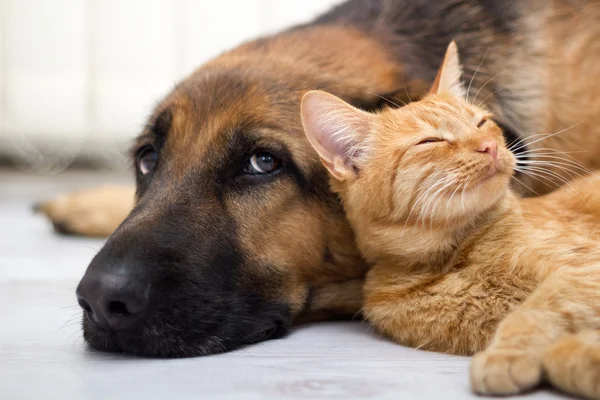Having pets—cats or dogs—in your home brings joy, laughter, and warmth. Yet along with the unconditional love, there are many practical and emotional aspects to consider when sharing your life with four-legged friends. In this article, we’ll explore how to harmonize life with pets, make your home more comfortable, and even incorporate home equipment meaningfully so everyone prospers: you, your pet, and your space.
Why Pets Matter: Dogs & Cats at Home
Dogs and cats both offer companionship in unique ways. Dogs are typically social, joyous, and actively gregarious. They often follow you around, want to play, and crave outdoor time. Cats, on the other hand, are more independent, serene, and sometimes mysterious—but they still want love, connection, and comfort.
Having a pet can reduce stress, improve mental health, and even contribute to better heart health. For many, the routine of feeding, walking (for dogs), and caring for them gives structure, responsibility, and purpose. Yet, one must balance that with the demands that pets bring: shedding fur, cleaning up, health care, training, and the cost of supplies.
Building a Pet-Friendly Home Environment
- Safe and Comfortable Resting Spaces: Provide cozy beds or hideaways. Cats like high perches or nooks; dogs often appreciate crates (if trained) or soft cushions. These give pets a retreat when they want rest or privacy.
- Durable, Easy-Clean Surfaces: Floors, furniture, carpets—choose materials and colors that hide fur, resist damage, and are easy to clean. Leather or faux leather, tile, or sealed hardwood can all make cleanup simpler.
- Proper Ventilation & Light: Pets benefit from fresh air and sunshine. Windows with screens, safe balconies, or even small fenced yards make great enrichment spaces. Natural light boosts mood—for both you and your pet.
- Designated Play & Exercise Areas: For dogs, a yard or walking routine is vital. Indoor space for play—balls, chew toys, puzzle feeders—helps burn energy. Cats often need vertical space: cat trees, shelves, and scratching posts to climb and stretch.
- Secure & Safe Setup: Remove toxic plants, secure wires, block off dangerous areas. Make sure household items like cleaning supplies, medications, and small ingestible objects are out of reach.
Harmonizing Technology with Pet Life
Modern homes have many electronic devices—TVs, audio systems, smart-home gear. These can both enhance life and cause friction if not carefully integrated into pet-friendly routines.
- Noise & Sudden Sounds: Dogs especially can be startled by sudden loud noises—television explosions, fireworks, commercials. It helps to regulate volume and use soft transitions.
- Cables & Equipment Safety: Pets, especially puppies and kittens, chew. Secure cables and hide power strips.
- TV & Entertainment Considerations: Some pets may like movement on screens—birds chirping, squirrels running. But screens also emit heat; make sure pets don’t sleep directly in front of vents or radiators behind or under your entertainment center.
If you’re looking for TV & DVD equipment—maybe you want a big screen for movie nights with your pet curled up beside you—there are a wide variety of options. For example, sites offering a large selection of products like tv on milay.pk can help you compare sizes, features, and price ranges. Choosing a model with lower risk of glare, reliable sound, and durable construction will serve both your household’s entertainment needs and accommodate pets safely.
Daily Routine: Feeding, Grooming, Training
- Feeding: Clean bowls, proper diet, scheduled feeding times. Overfeeding leads to obesity; underfeeding causes health issues.
- Grooming: Regular brushing prevents mats, shedding. Cats groom themselves but still benefit from brushing; dogs often need baths and nail trims.
- Training (especially for dogs): Basic obedience reduces chaos—commands like “sit,” “stay,” “leave it.” Positive reinforcement works best.
- Litter Boxes (for cats): Place in quiet but accessible area. Clean frequently to avoid odor and ensure use.
Emotional & Social Aspects
- Bonding & Affection: Time together—play, grooming, cuddling. This builds trust and reduces behavioral issues.
- Stress & Behavior Signals: Pets communicate when they’re upset—growling, hissing, hiding, barking, scratching furniture. Learn their body language and respond with patience.
- Routine & Stability: Pets thrive on routine—feeding times, walks, play times. Changes (moving house, new people, new pets) should be introduced gradually.
When Pets Meet Home Entertainment
Imagine the scene: you’re settling down for movie night; your dog is at your feet, your cat is curled up on the couch. A thoughtfully chosen television and DVD setup can enhance that experience:
- Choose a screen size that allows comfortable viewing across the room—without forcing you to move the pet bed out of the way every time.
- Pick audio systems that balance richness with volume control—so when the suspenseful scene hits, your dog doesn’t bolt and your cat doesn’t flee.
- If you often watch DVDs, ensure your player is reliable and accessible—you’ll want to avoid the frustration of frequent skipping or having to constantly adjust settings.
Conclusion
Having dogs or cats in the home is a deeply rewarding experience, blending laughter, comfort, companionship—and responsibility. By arranging your living space, routine, and entertainment systems thoughtfully, you can reduce stress and maximize joy for both you and your pets.
When thinking of adding or upgrading elements like your TV/DVD setup, consider not just how it will serve your viewing habits, but also how it impacts your pet’s comfort and safety. A balanced, considerate approach ensures that your home remains a haven for all its inhabitants—two-legged and four-legged alike.






